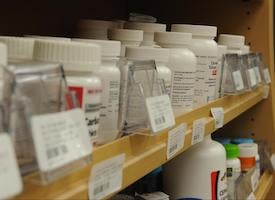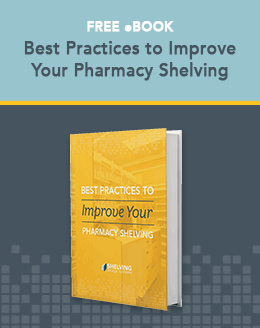
When someone visits your pharmacy, it’s not usually because they’ve gotten good news. They’re sick, tired, cranky, and — on occasion — even confused or a bit scared. If your pharmacy isn’t designed well, the time you could be using to put their minds at ease is instead wasted on repetitive tasks, leaving customers to cool their heels and wonder if they should, perhaps, have visited your competitor across town. It important that you maximize every square foot of your space. The lessons below are distilled from our years of experience in the design field.
Evaluate Your Current Workflow
Philip Doll, a Six Sigma Master Black Belt, who is Director of Business Process for McKesson U.S. Pharmaceutical, lays out a number of efficiency principles for pharmacies, but the most important, he says, is measurement. Knowing your current workflow gives you a solid baseline from which to work, and against which to measure what’s effective and what isn’t. Unless you know your problems, you won’t be able to adequately identify solutions or know when those problems have been solved.
Evaluate the Steps Taken — Literally
Wasted motion wastes time, but that’s hardly the only ill effect. Many people who work on their feet all day, whether they’re pharmacists or the sales staff in a retail pharmacy, suffer from aches, pains, and even repetitive strain injuries. Identifying ways to eliminate steps from your workflow — whether they’re the steps walked, or the steps included in a task — limits redundancy and increases efficiency in a way that’s literally pain-free.
Automate Processes Where Possible
Each of us has a “zone of genius,” a particular skill set at which we excel. The manual labor of dispensing medicine isn’t the best use of a pharmacist’s time and efforts, so systems that automate dispensing free up time that’s better put to other uses. That means more time to deliver quality care to customers, which in turn improves customer retention in a highly competitive climate.
Manage Inventory
How much space is taken up by medications that are rarely prescribed, or by items creeping up on their expiration dates because they’re so rarely dispensed? Making use of an inventory control system does more than ensure better regulatory compliance. Used correctly, it also prevents pharmacies from wasting space and money that are better put to other uses.
Maximize Selling Space
There’s a follow-on benefit to taking the steps above. Better inventory management, a smarter layout, a more efficient workflow, and a less human-intensive work process can often mean more retail pharmacy shelving, or the space to undertake other activities. You may find that you have space for a compounding pharmacy, a small wellness clinic, or more retail square footage.
Making the most of the space you have isn’t something you do for appearances’ sake. Yes, you’ll have a nicer workplace, but the reasons for an efficient pharmacy design run much deeper than that. If you know your pharmacy is capable of more than it’s currently delivering, it may be time for a design consultation with Shelving Design Systems. We won’t simply offer advice; we can offer solutions, the same as we’ve done for pharmacies of nearly every size and type imaginable, including long-term care pharmacies and closed-door pharmacies.


